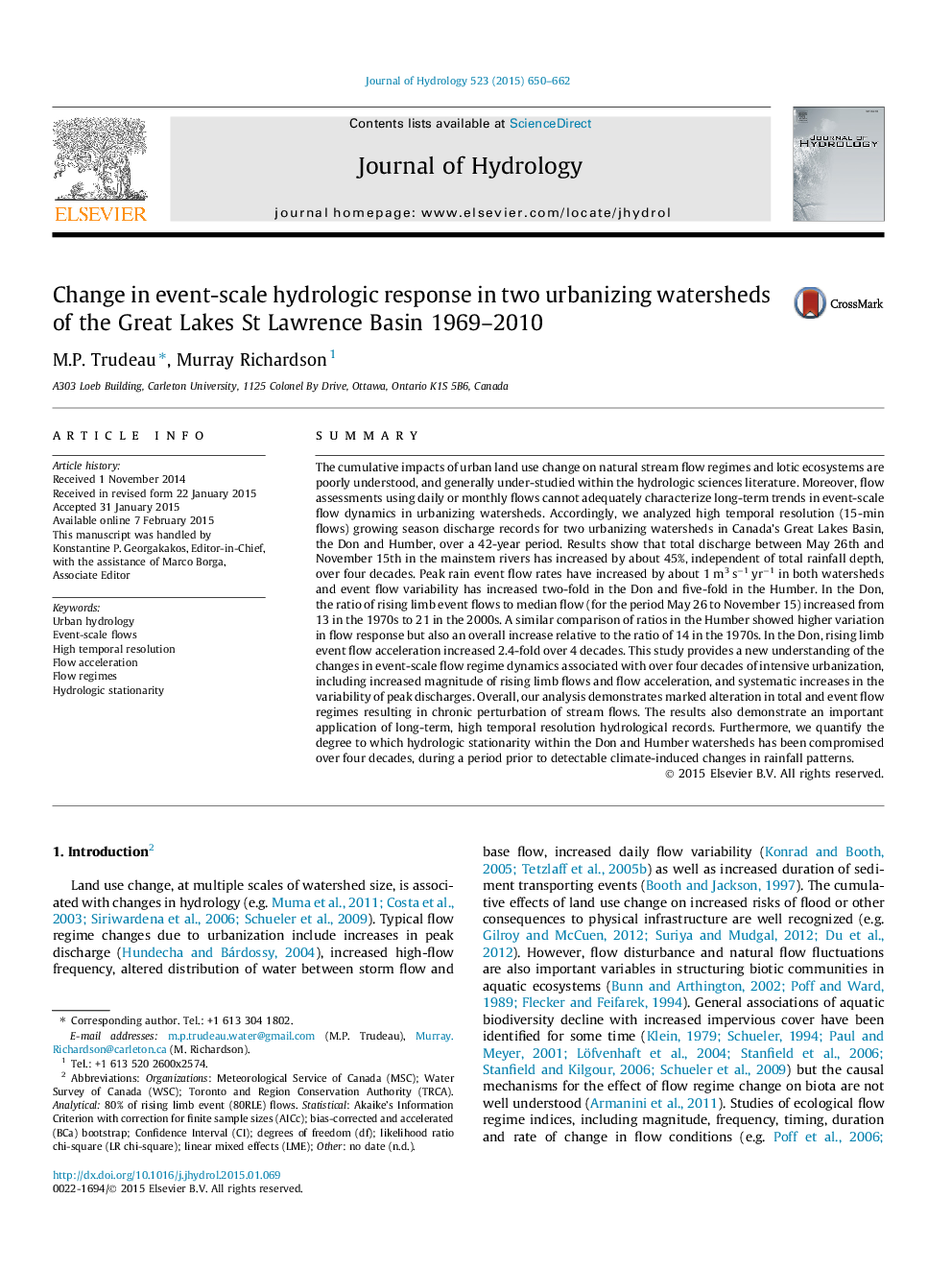| Article ID | Journal | Published Year | Pages | File Type |
|---|---|---|---|---|
| 6411771 | Journal of Hydrology | 2015 | 13 Pages |
â¢High temporal resolution hydrologic records indicate chronic flow regime disruption.â¢Total seasonal discharge in two urbanizing watersheds increased 45% in 4 decades.â¢Peak rain event flows increased about 1 m3 sâ1 yrâ1 in four decades.â¢Available data indicate urban land use explains same statistical variation as year.â¢Quantified loss of hydrologic stationarity, attributable to urbanization.
SummaryThe cumulative impacts of urban land use change on natural stream flow regimes and lotic ecosystems are poorly understood, and generally under-studied within the hydrologic sciences literature. Moreover, flow assessments using daily or monthly flows cannot adequately characterize long-term trends in event-scale flow dynamics in urbanizing watersheds. Accordingly, we analyzed high temporal resolution (15-min flows) growing season discharge records for two urbanizing watersheds in Canada's Great Lakes Basin, the Don and Humber, over a 42-year period. Results show that total discharge between May 26th and November 15th in the mainstem rivers has increased by about 45%, independent of total rainfall depth, over four decades. Peak rain event flow rates have increased by about 1Â m3Â sâ1Â yrâ1 in both watersheds and event flow variability has increased two-fold in the Don and five-fold in the Humber. In the Don, the ratio of rising limb event flows to median flow (for the period May 26 to November 15) increased from 13 in the 1970s to 21 in the 2000s. A similar comparison of ratios in the Humber showed higher variation in flow response but also an overall increase relative to the ratio of 14 in the 1970s. In the Don, rising limb event flow acceleration increased 2.4-fold over 4 decades. This study provides a new understanding of the changes in event-scale flow regime dynamics associated with over four decades of intensive urbanization, including increased magnitude of rising limb flows and flow acceleration, and systematic increases in the variability of peak discharges. Overall, our analysis demonstrates marked alteration in total and event flow regimes resulting in chronic perturbation of stream flows. The results also demonstrate an important application of long-term, high temporal resolution hydrological records. Furthermore, we quantify the degree to which hydrologic stationarity within the Don and Humber watersheds has been compromised over four decades, during a period prior to detectable climate-induced changes in rainfall patterns.
Graphical abstractDownload full-size image
